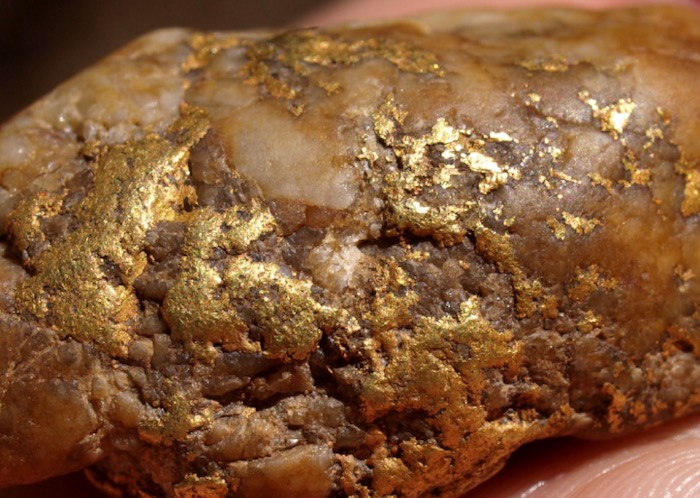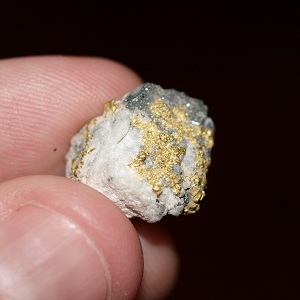
Gold that is still encased in quartz, often called a gold specimen, is highly sought after by prospectors and collectors alike. Each one is unique and they are a real treat to find.
Although rare, it is still possible to find beautiful specimens if you know where to search. Here are a few tips that will help you increase your odds of finding one.
Anywhere that you typically find gold has the potential to produce a gold quartz specimen, but if you specifically want to target for them, certain areas will have higher odds of producing one. Do a little research on the area that you want to prospect, and try to find out if the area has ever produced any nice specimens in the past.
There are certain mining districts that are known to produce nice specimens. I know of one specific area that I prospect that almost all of the nuggets have at least some quartz matrix, and many of them have a high percentage of quartz with really attractive gold veins running through it. These are the areas you want to try and find.
Where to Look
If you don’t know if an area is known for producing specimens, talk to local miners in the area. They may be willing to share a little knowledge. Go to the library and look for books and geological reports about the area. Often these resources will make mention of things like this and can help guide you in the right direction.
Once you have determined a general area that you want to work, you need to hone in on the specific spot that you want to prospect. Since these specimens are generally rough and unpolished, you want to look near the source of the gold production, rather than down low near the water.
The gold that is in rivers and streams has been there for thousand of years, and has had time for erosion to take place. That is why most gold that you find when you are dredging or sluicing are small, smooth nuggets. Look closer to the source.
What do I mean by close to the source? You want to find the old lode mines where prospectors dug into the hillside looking for gold. These lode mines may be a tunnel that went hundreds of feet into the earth, but often times they were small diggings that just scratched the surface of the earth.
Since 150 years has passed since the early prospectors were working these areas, sometimes these small prospects are almost invisible, just a small indentation in the hillside with a subtle pile of waste material nearby. It can take a trained eye to spot these places, but if you can find one it can be a bonanza!

Techniques for Hunting Gold in Quartz
So what is the best tool for recovering a gold in quartz rock?
By far your best odds of recovering one of these specimens is to use a metal detector. Since we are looking for chunk of quartz rock with visible gold, a metal detector is the perfect tool. They allow you to scan a very large area, covering a lot of ground.
Search the old tailings, if there are any piles of hand stacked rocks give them a quick scan with your detector. Check the entrance of old mine entrances and and waste rock that you find. The old timers had a tendency to high grade material since low grade ore didn’t pay to process. At todays gold prices, any gold is good gold! Plus with modern metal detector technology, we are able to “see” more than the miners could in the early days.
It is also worth noting that not all specimens are “collectors grade” pieces. Sometimes high-grade ore will sound off your metal detector but the gold is completely encased in rock. If you come across a lot of high-grade ore, you might want to simply crush the rock and pan out the gold inside.
Next: The Minelab Gold Monster 1000
